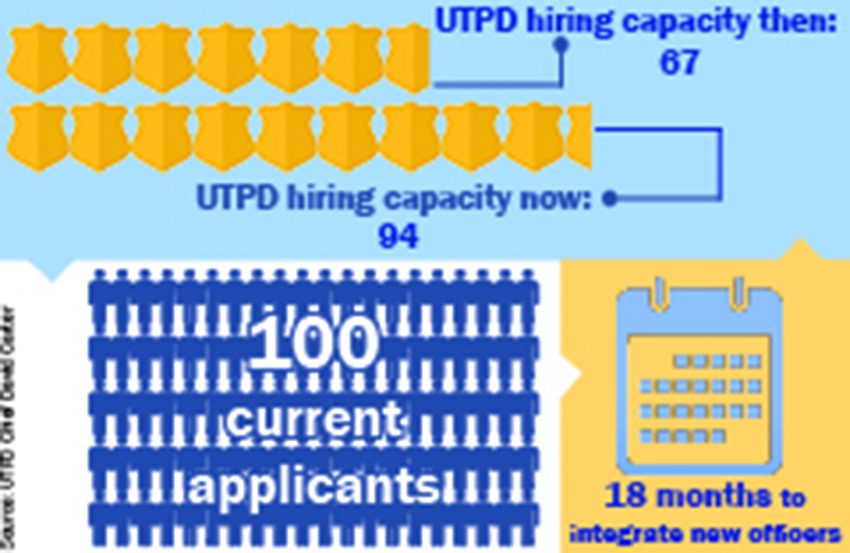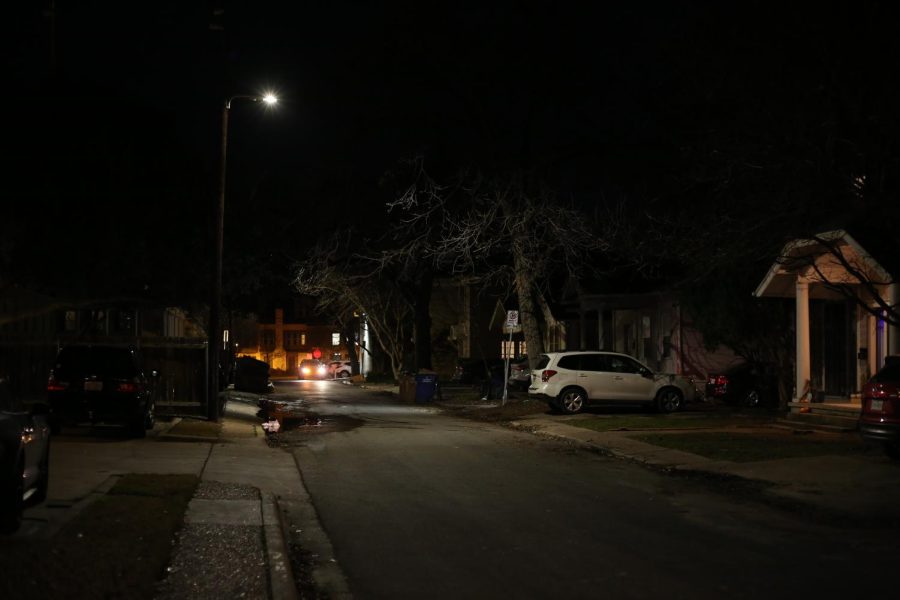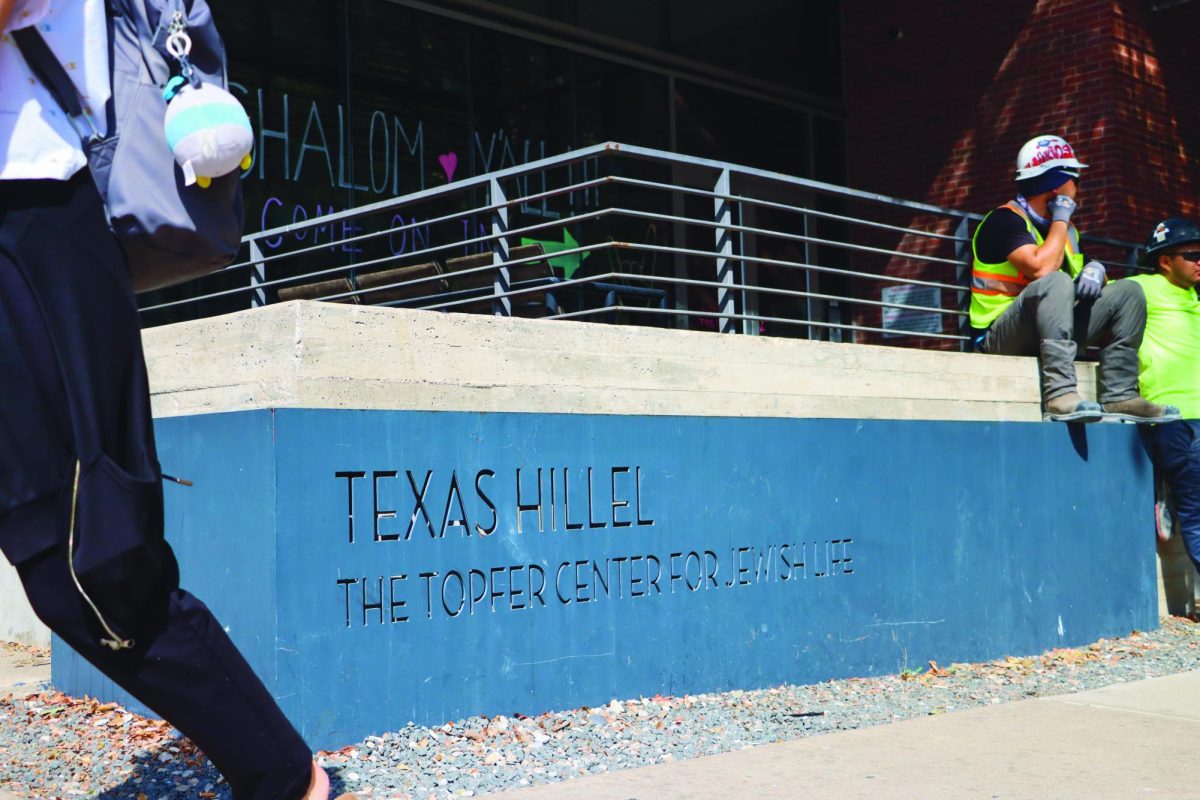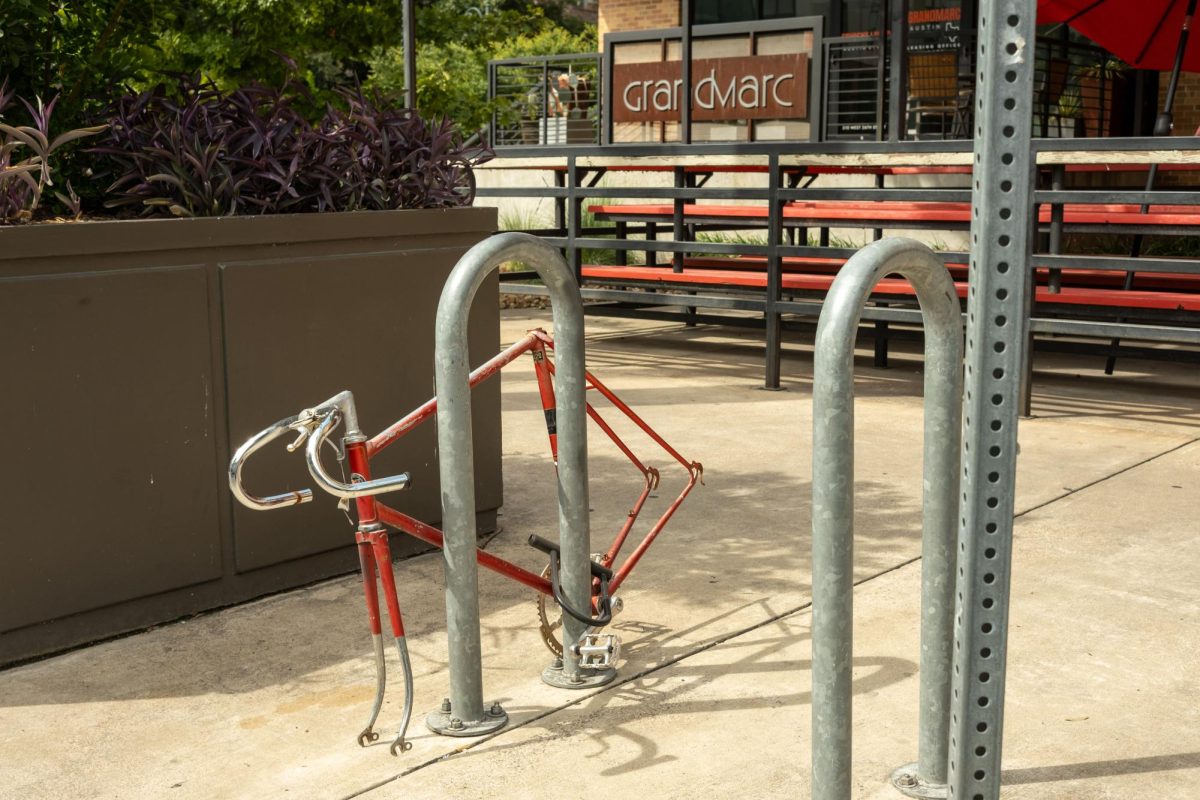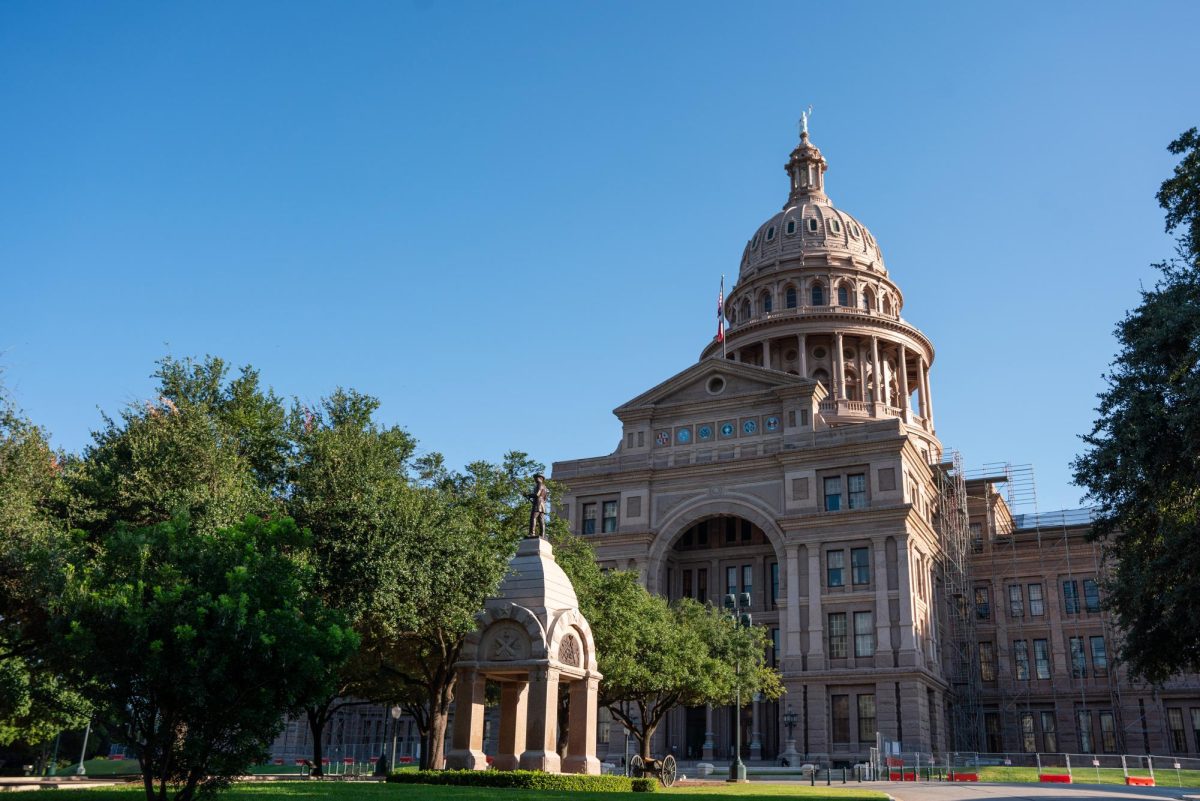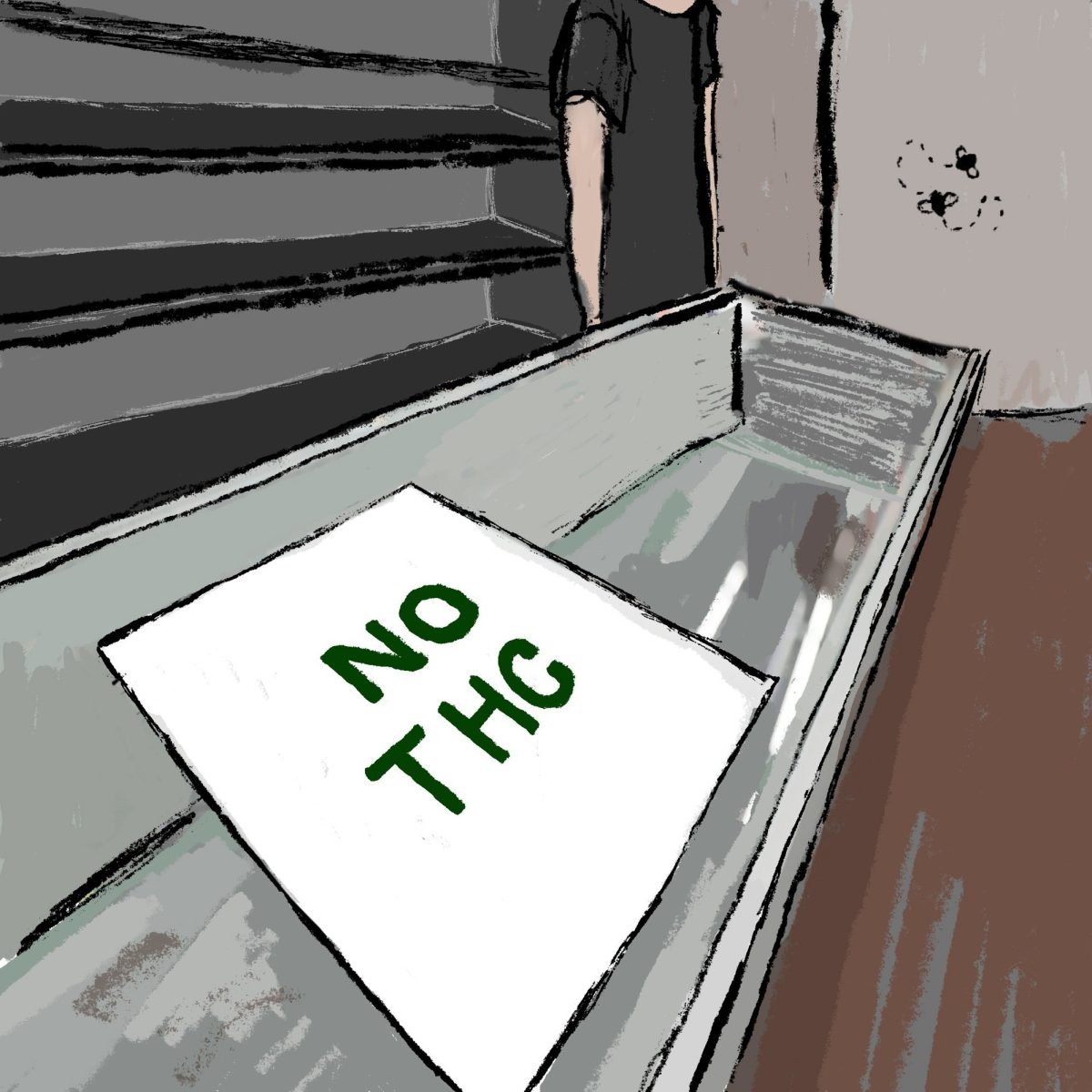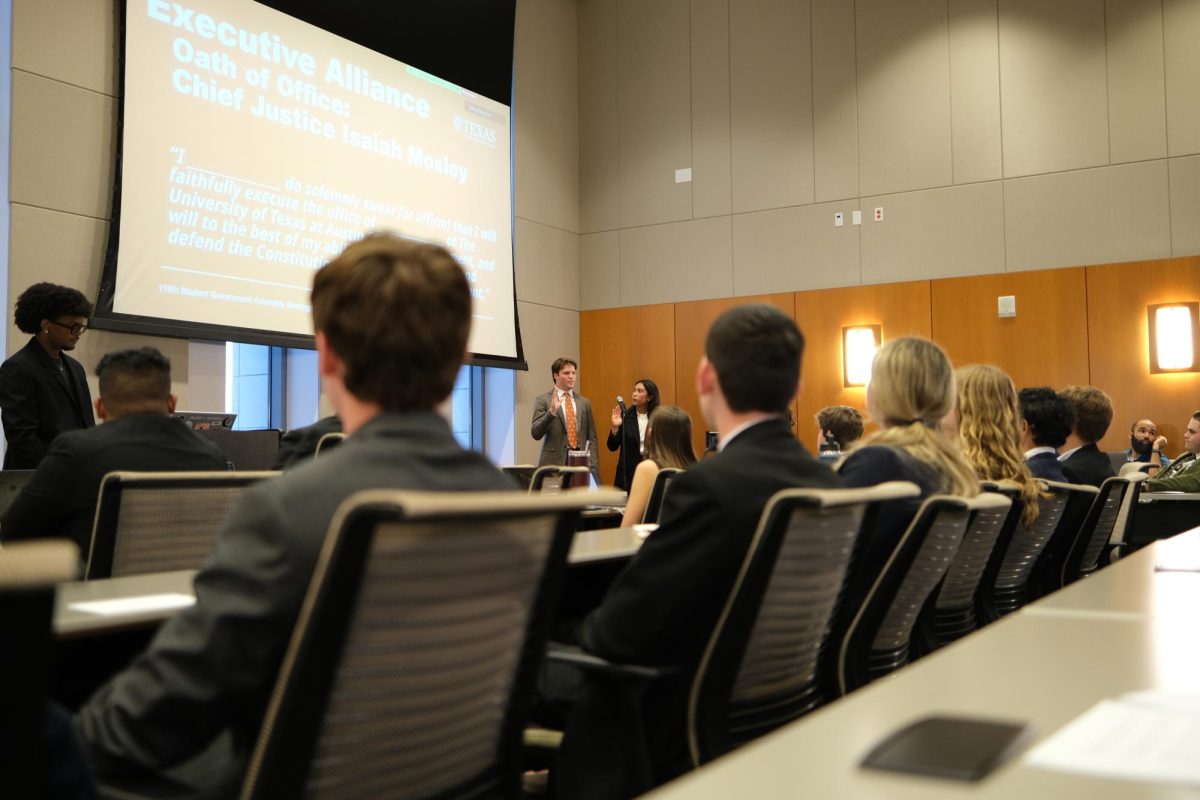University President Gregory Fenves echoed strong support in his state of the University address Tuesday that more UT Police Department officers be added to the police force on campus, a suggestion from the Department of Public Safety’s campus review, which was conducted over the course of the spring and summer semesters.
“We will hire additional police officers and guards, upgrade lighting and video monitoring, improve building access controls and engage with the community to address concerns about transient individuals on and around campus,” Fenves said.
Law enforcement recruitment efforts have been strained nationwide, and although UTPD has a steady flow of applicants, problems such as retention and slow training turnover rates could pose a challenge to this increased demand, UTPD Chief David Carter said.
“We currently are actively recruiting police officers and we’re going through that process,” Carter said. “Number one, it’s about anticipating our current need. For two, it’s to forecast what’s likely to come down the pipe.”
As of now, 94 police officers comprise the UTPD force, a significant jump from its size in 2013, which included 67 police officers, Carter said.
“With the advent of the medical school, there was going to be a teaching hospital on campus, there was some other changes and growth in the general area,” Carter said. “Over the past three years we developed a plan to try and increase our authorized strength.”
These recent changes were brought on independently from the DPS report, which is still being mulled over by the University administration. The authorized strength Carter referred to is the amount of officers the University will allow funding for. Funds have not been allocated yet, and the exact number of police officers that will be necessary to meet the DPS evaluation’s standards has not been decided.
“[The President] asked our chief compliance officer Paul Leibman to implement those recommendations,” said Gary Susswein, chief communications officer for the University. “It’s been a couple of weeks and we’re still in the process of figuring out the best practices but we do hope to move quickly.”
The fast pace at which the University seeks to hire new recruits could potentially be challenging, since UTPD is currently only capable of training 10 potential officers at a time. There are currently 100 applicants seeking those 10 coveted spots, and the individuals accepted will begin an 18-month journey to becoming a fully-fledged police officer.
“Simply because we have a vacancy that’s been created and a higher authorized strength doesn’t mean you can suddenly put a police officer there,” Carter said. “It doesn’t really work that way, especially in policing.”
Lateral positions, which are designated for officers with previous experience, can ease the issue of waiting on the police training program. This doesn’t completely overcome the challenge, however, Carter said.
Other hurdles faced by the department include retaining officers that have melded well with the police culture found at UTPD, but who decide to leave after a number of years.
“I think that [retention] stabilized somewhat but still continues to be somewhat of a problem,” Carter said. “We develop really great police officers and what happens is they will frequently be recruited out from under us because now … other police departments can afford to pay more than we can.”

